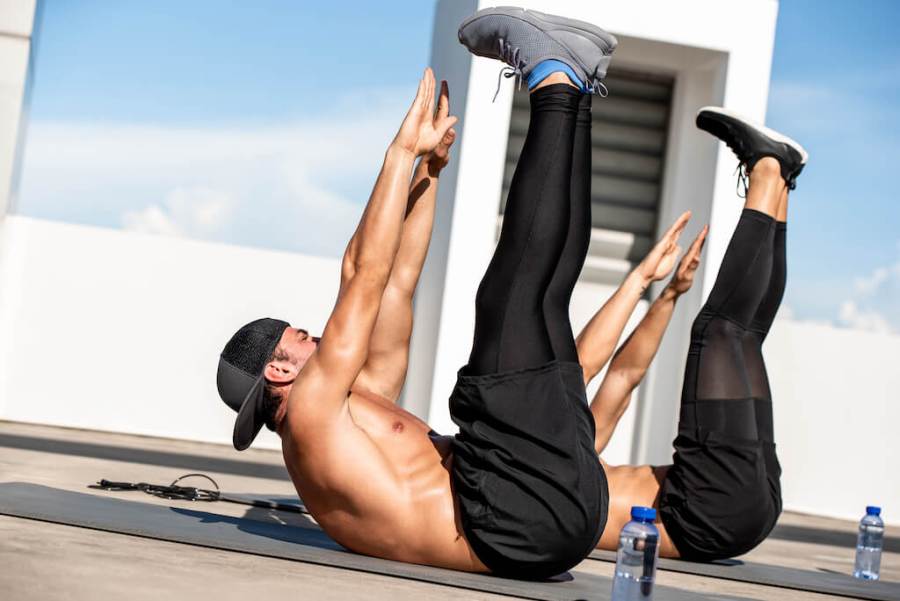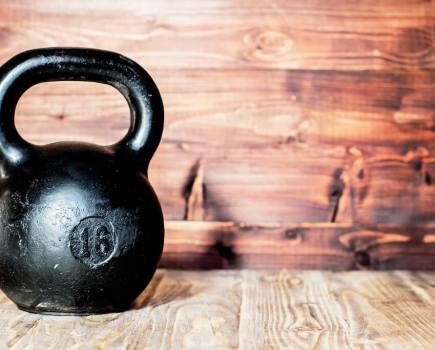High-intensity interval training (HIIT) has become a fitness phenomenon, largely because it has been sold as a quick-fix solution: get fit, fast.
Curious about the pros and cons of HIIT? In a world where personal and professional commitments drag us in all directions, time is tighter and more precious than ever. For anyone looking to lose belly fat or get in shape, that means getting a big calorie burn out of a quicker workout seems a no-brainer. Why spend an hour breaking a sweat, when you can achieve just as much in half that period?
But as studies emerge questioning the true efficiency of this training method, along with the potential risks it poses, is HIIT is really worth the strain.
What is HIIT?
The clue’s in the name: high-intensity interval training means working hard – really hard – for short efforts. With each burst of between 20 and 60 seconds, your heart rate should be up at around 80%. You then follow this with a short break of 10 to 20 seconds.
Because of its intensity, sessions tend to be short, usually less than half an hour in duration.
Olympic athletes have used forms of interval training for almost a century. However, HIIT’s mainstream popularity has only taken off in the last decade.
Get kitted out for your next HIIT workout with the best shorts for men
Aside from saving time, HIIT’s appeal is founded on variety, as numerous exercises can be incorporated into one session, keeping training fresh and your body guessing.
“The thing to understand with HIIT,” explains strength coach Scott Pearson, “is that there’s not just one method. You can incorporate anything. It could be as simple as running up a hill and then walking back down, like a hill sprint.
“Or you can incorporate weight into it, for a circuit-type session. HIIT opens up a whole world of variation.”
This variety also allows HIIT to be easily accessible and adaptable according to an individual’s fitness level and skillset.
The idea is to exercise at high intensity – whatever that means for the individual. For example, someone with advanced fitness levels might do exercises like burpees, box jumps, hills sprints or pull-ups.
For a beginner or someone with limited mobility, exercises like speed walking, step-ups, air punches or unweighted squats might be challenging enough.
Try this bodyweight HIIT home workout to burn fat fast

HIIT involves working hard for short periods of time, interspersed with short rest periods | Photography: Shutterstock
Benefits of HIIT
The benefits of HIIT, however, extend much further than the gym.
Our heart and VO2 levels are significantly impacted when working at a high intensity, so it comes as little surprise that studies indicate a positive correlation between heart health and HIIT – with improved blood circulation and lower cholesterol both reported in those regularly undertaking this training.
Further research demonstrates that diabetics can also reap the benefits of exercising to the max, with recurrent HIIT notably improving glucose metabolism and insulin sensitivity.
Recent pilot studies have also noted the potential positive impact HIIT can have on colon cancer and rheumatoid arthritis.
Steve Tansey, head of research and development at Les Mills, suggests HIIT offers mental advantages, too.
“It encourages escapism”, he says. “If you’re only thinking about your next breath, you’re not thinking about your problems anymore.”
Plus, he adds, “HIIT is all about camaraderie. Whenever you do something arduous or scary, usually you start to befriend the people around you as there’s a common enemy in the room. And the common enemy with HIIT is the workout.”
Problems with high-intensity interval training
Yet despite fitness trainers and researchers championing HIIT, there is – as always – another side to the argument.
For starters, the way people have marketed this type of training is cause for questioning. As Billy Ruston, co-founder of SetLDN asks: “When does a quick fix work for anything? It doesn’t really exist – it’s like putting a plaster over a gaping wound.”
And a growing body of research is throwing up similar questions. Previous studies suggested that performing intense intervals can assist in torching up to 30% more calories compared to a steady state workout.
However, a recent study showed that, over a similar time period, there was little difference in excess post-exercise energy consumption (EPOC) between steady-state training (SST) and HIIT.
Research from earlier this year also indicated no difference in visceral fat loss between those performing HIIT and SST.
Furthermore, when it comes to the nitty gritty of your fitness capacity – aerobic and anaerobic output – several studies, including one published in January, found no difference in these between those exercising at high intensity and at a steady state.
HIIT and injuries
One of the biggest arguments against HIIT, though, is the significantly higher incidence of injury experienced by those undertaking it.
This is a factor acknowledged throughout the fitness industry, and a study released this summer showed a staggering 247% increase in injury rates in those doing high-intensity exercise.
There are a couple of key factors as to why injury rates are so much higher with HIIT. The first is the incorrect execution of moves.
“The exercise selection is often wrong with HIIT,” says PT Tom Ward. “You’ll see a lot of people using plyometric exercises and kettlebells in HIIT sessions. People just haven’t built up to that.”
Pearson adds, “You wouldn’t learn to drive a car and then go at 80 miles an hour straight away. You would work up to it. The same thing applies to any kind of exercise. You can’t go straight in on movements and exercises you don’t have complete control over.”
The second factor is the pressure and stress that HIIT puts on the joints and muscles, especially with those who have less experience with this level of exercise intensity.
“High-impact exercises stress the joints more,” explains Ward. “You need to build up to HIIT. It’s about not pushing the limits too soon.”

Many people find HIIT more fun that traditional steady-state cardio
HIIT and the fun factor
What none of the above takes into account, however, is enjoyment. With any type of training, the one you enjoy the most is going to be the one that’s most effective for you.
And in terms of the feel-good factor, the jury is still out on whether HIIT or SST nabs the top spot.
Some research suggests that working at a higher intensity releases more endorphins, but others indicate greater positives are drawn from more moderate levels of exercise.
For Tansey, it’s all about personal preference. “Some people love leaving the gym a big sweaty mess, feeling like they’ve left it on the floor. Others find that quite harrowing.”
As with anything, balance is key. By complementing a HIIT workout with a variety of strength and SST methods throughout the week, you’ll actively improve your endurance, joint health and skillset – rather than developing a focus on one specific area.
“Everything is supported by a balance of everything else,” says Pearson.
Equally, if muscles are your motivation, you’ll need to complement your high-intensity training with some dedicated weight work.
On busy days, the rush of pushing yourself to the max in a short space of time is the perfect fitness solution.
But in order to achieve wider overall health and fitness goals, it’s wise to complement any high-octane training with some steadier sessions.
Words: Chantelle Pattemore








